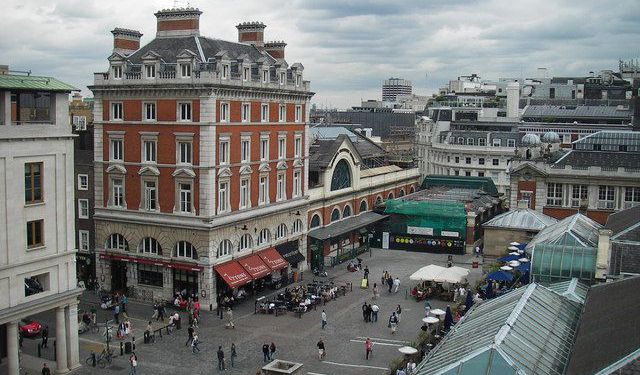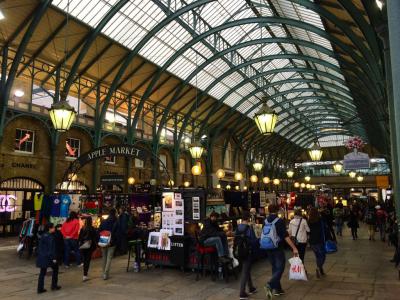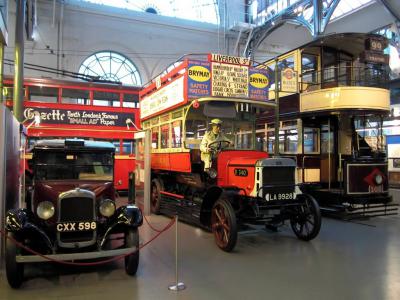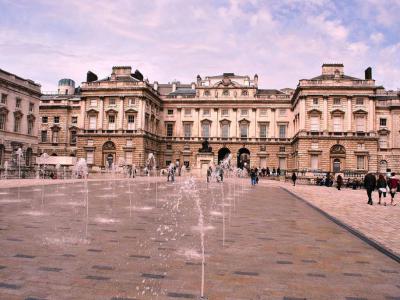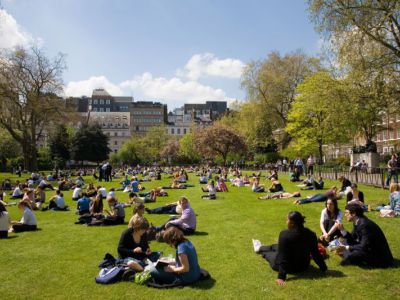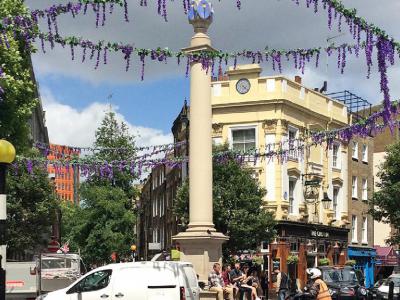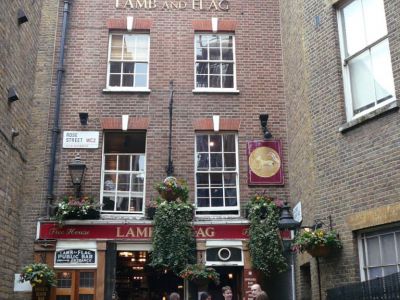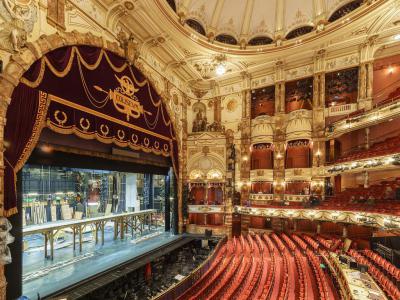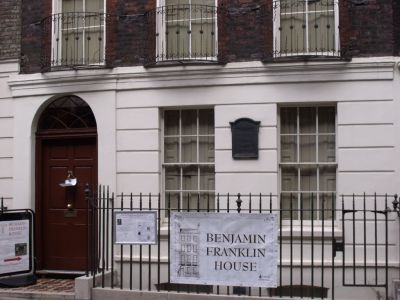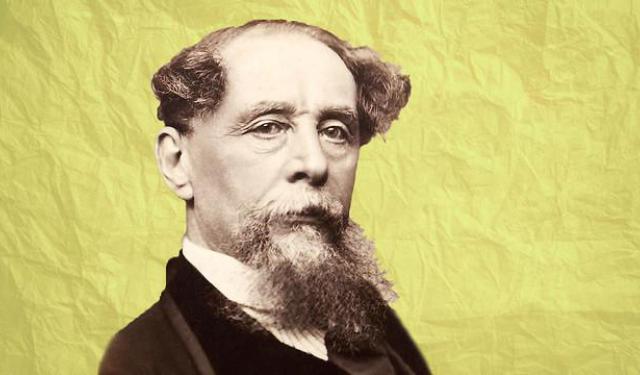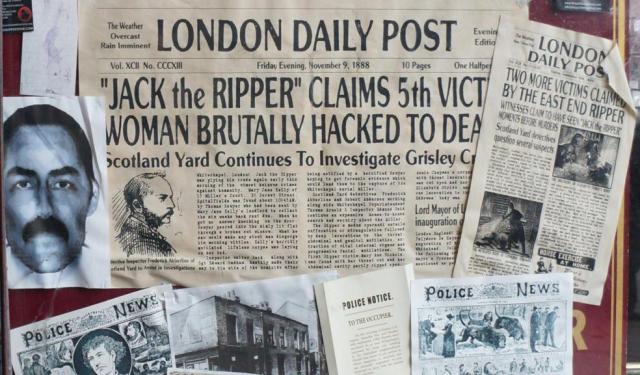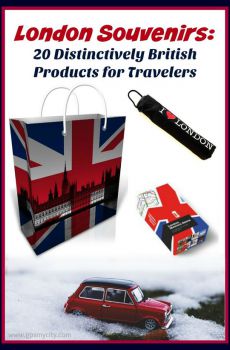Covent Garden Walking Tour (Self Guided), London
A shopping and entertainment hub on the eastern fringes of London's West End, Covent Garden is a district historically associated with the former fruit-and-vegetable market – currently a shopping spot popular with locals and tourists alike.
Once a slum area, today the north of the district is given over to independent shops centered on Neal's Yard and Seven Dials. Both places offer boutique shops, vintage and street style clothes, and a great number of pubs and restaurants that cater to shoppers and diners of all tastes.
The south of the district contains many historic buildings, theatres and entertainment venues, such as the London Transport Museum and London Coliseum.
In 1757, Benjamin Franklin, one of the founding fathers of the US, arrived in London as agent for the then Pennsylvania Assembly. He settled in a terraced Georgian house on Craven Street, a short distance from the market. During the periods of 1757-1762 and 1764-1775, Franklin lived in the house for nearly sixteen years. Today his former residence is open to public as a museum.
To acquaint yourself with London's Covent Garden for a chance to see its top attractions and sample the variety of shopping and dining options, take this self-guided walking tour!
Once a slum area, today the north of the district is given over to independent shops centered on Neal's Yard and Seven Dials. Both places offer boutique shops, vintage and street style clothes, and a great number of pubs and restaurants that cater to shoppers and diners of all tastes.
The south of the district contains many historic buildings, theatres and entertainment venues, such as the London Transport Museum and London Coliseum.
In 1757, Benjamin Franklin, one of the founding fathers of the US, arrived in London as agent for the then Pennsylvania Assembly. He settled in a terraced Georgian house on Craven Street, a short distance from the market. During the periods of 1757-1762 and 1764-1775, Franklin lived in the house for nearly sixteen years. Today his former residence is open to public as a museum.
To acquaint yourself with London's Covent Garden for a chance to see its top attractions and sample the variety of shopping and dining options, take this self-guided walking tour!
How it works: Download the app "GPSmyCity: Walks in 1K+ Cities" from Apple App Store or Google Play Store to your mobile phone or tablet. The app turns your mobile device into a personal tour guide and its built-in GPS navigation functions guide you from one tour stop to next. The app works offline, so no data plan is needed when traveling abroad.
Covent Garden Walking Tour Map
Guide Name: Covent Garden Walking Tour
Guide Location: England » London (See other walking tours in London)
Guide Type: Self-guided Walking Tour (Sightseeing)
# of Attractions: 9
Tour Duration: 2 Hour(s)
Travel Distance: 3.0 Km or 1.9 Miles
Author: DanaOffice
Sight(s) Featured in This Guide:
Guide Location: England » London (See other walking tours in London)
Guide Type: Self-guided Walking Tour (Sightseeing)
# of Attractions: 9
Tour Duration: 2 Hour(s)
Travel Distance: 3.0 Km or 1.9 Miles
Author: DanaOffice
Sight(s) Featured in This Guide:
- Covent Garden Piazza
- London Transport Museum
- Somerset House
- Lincoln's Inn Fields
- Neal's Yard
- Seven Dials
- Lamb & Flag
- London Coliseum
- Benjamin Franklin House
1) Covent Garden Piazza (must see)
The transformation of Covent Garden from a utilitarian fruit and vegetable market in the 1670s into a trendy district was one of the most comprehensive and enduring developments of the 1980s. Unlike its neighbor Soho, Covent Garden is more mainstream and commercially oriented but also significantly more popular. Its appeal is greatly enhanced by the presence of street performers, buskers, and living statues, creating a vibrant atmosphere in the traffic-free Covent Garden Piazza.
This historically renowned piazza now encompasses three distinct market areas: the Apple Market, the East Colonnade Market, and the Jubilee Market. Within the Apple Market, located in the main covered area originally designed by Inigo Jones, you can find 40 stalls offering handcrafted jewelry, prints, clothing, ceramics, and various crafts from Tuesday to Sunday (Mondays are dedicated to antiques, curiosities, and collectibles). The East Colonnade Market features stalls primarily showcasing handmade specialty items such as soaps and jewelry, as well as housewares, accessories, and magic tricks. The Jubilee Market offers kitschy T-shirts and budget-friendly household goods from Tuesday to Friday, but on Mondays and weekends, you can explore vintage antiques, collectibles, and handcrafted goods.
Traditionally catering to tourists, Covent Garden Market has evolved and now presents a more sophisticated image, accompanied by higher price points. This transformation is evident through the introduction of upscale restaurants and well-known chains in the surrounding arcades. Notable establishments include a sizable Apple Store, beauty boutiques like Chanel and MAC, as well as exclusive boutiques for renowned brands such as N.Peal and Mulberry.
Throughout the day, Covent Garden is teeming with tourists, and in the evening, it becomes a favorite haunt for theater enthusiasts either heading to or returning from the Royal Opera House. If you happen to be touring London during the holiday season, this place is a genuine delight. Every building seems to be adorned with festive decorations and twinkling lights, creating a truly magical atmosphere.
Why You Should Visit:
While some locals may dismiss Covent Garden Market as a tourist hotspot, it remains a worthwhile destination for anyone. Historically, this market was a place where people of all social classes in London gathered with a shared purpose: shopping. Today, that original spirit of the market endures, as Londoners continue to converge here to indulge in a uniquely British shopping experience. It's a bustling, vibrant place that encapsulates the essence of authentic London at its finest.
This historically renowned piazza now encompasses three distinct market areas: the Apple Market, the East Colonnade Market, and the Jubilee Market. Within the Apple Market, located in the main covered area originally designed by Inigo Jones, you can find 40 stalls offering handcrafted jewelry, prints, clothing, ceramics, and various crafts from Tuesday to Sunday (Mondays are dedicated to antiques, curiosities, and collectibles). The East Colonnade Market features stalls primarily showcasing handmade specialty items such as soaps and jewelry, as well as housewares, accessories, and magic tricks. The Jubilee Market offers kitschy T-shirts and budget-friendly household goods from Tuesday to Friday, but on Mondays and weekends, you can explore vintage antiques, collectibles, and handcrafted goods.
Traditionally catering to tourists, Covent Garden Market has evolved and now presents a more sophisticated image, accompanied by higher price points. This transformation is evident through the introduction of upscale restaurants and well-known chains in the surrounding arcades. Notable establishments include a sizable Apple Store, beauty boutiques like Chanel and MAC, as well as exclusive boutiques for renowned brands such as N.Peal and Mulberry.
Throughout the day, Covent Garden is teeming with tourists, and in the evening, it becomes a favorite haunt for theater enthusiasts either heading to or returning from the Royal Opera House. If you happen to be touring London during the holiday season, this place is a genuine delight. Every building seems to be adorned with festive decorations and twinkling lights, creating a truly magical atmosphere.
Why You Should Visit:
While some locals may dismiss Covent Garden Market as a tourist hotspot, it remains a worthwhile destination for anyone. Historically, this market was a place where people of all social classes in London gathered with a shared purpose: shopping. Today, that original spirit of the market endures, as Londoners continue to converge here to indulge in a uniquely British shopping experience. It's a bustling, vibrant place that encapsulates the essence of authentic London at its finest.
2) London Transport Museum
Situated on Covent Garden Piazza's eastern side, a former flower-market shed is now home to this highly popular museum. A hit among families and a must-visit for transportation enthusiasts, it's worth noting that due to space constraints, the museum features only a limited number of sizable exhibits. Nevertheless, the narrative of London's transportation history is absolutely captivating.
To explore in chronological order, begin your journey on Level 2, where you'll encounter a replica of the 1829 Shillibeer's Horse Omnibus, which marked the inception of the city's first regular horse-bus service, as well as a double-decker horse-drawn tram introduced in the 1870s. On Level 1, you'll delve into the story of the world's inaugural underground system, featuring a charming 1920s Metropolitan Line carriage adorned in burgundy and green, complete with graceful, dangling lamps.
Upon returning to the ground floor, you'll find the museum's sole surviving double-decker electric tram, serving as a tribute to the world's largest tram system that was dismantled in 1952. Be sure to keep an eye out for the first tube train from the 1890s, which earned the nickname "the padded cell" due to its lack of windows. While most interactive exhibits cater to children, visitors of all ages should not miss the opportunity to experience the tube driver simulator.
The museum also offers a fine selection of London Transport's stylish maps and posters, many of which are commissioned from renowned artists. You can purchase copies at the museum's shop as you make your way out. Additionally, the in-house Canteen provides food and beverages, and you can savor a view overlooking the Covent Garden Piazza while you dine.
To explore in chronological order, begin your journey on Level 2, where you'll encounter a replica of the 1829 Shillibeer's Horse Omnibus, which marked the inception of the city's first regular horse-bus service, as well as a double-decker horse-drawn tram introduced in the 1870s. On Level 1, you'll delve into the story of the world's inaugural underground system, featuring a charming 1920s Metropolitan Line carriage adorned in burgundy and green, complete with graceful, dangling lamps.
Upon returning to the ground floor, you'll find the museum's sole surviving double-decker electric tram, serving as a tribute to the world's largest tram system that was dismantled in 1952. Be sure to keep an eye out for the first tube train from the 1890s, which earned the nickname "the padded cell" due to its lack of windows. While most interactive exhibits cater to children, visitors of all ages should not miss the opportunity to experience the tube driver simulator.
The museum also offers a fine selection of London Transport's stylish maps and posters, many of which are commissioned from renowned artists. You can purchase copies at the museum's shop as you make your way out. Additionally, the in-house Canteen provides food and beverages, and you can savor a view overlooking the Covent Garden Piazza while you dine.
3) Somerset House
Somerset House, featuring four wings that encircle a spacious courtyard reminiscent of a Parisian hôtel, stands as the final remnant of the grand riverside mansions that once graced the Strand. While its appearance may suggest an ancient aristocratic palace, this edifice was actually purpose-built in 1776 by William Chambers to accommodate government offices, including the Navy Office.
Today, Somerset House's courtyard, paved with granite, offers a delightful retreat, thanks to a 55-jet fountain that gracefully spurts water from the cobblestones, performing a syncopated dance every half-hour (daily from 10am to 11pm). Throughout the year, the courtyard buzzes with activity, hosting open-air performances, concerts, installations, and during the winter season, an ice rink.
Inside, the building unfolds into a labyrinth of corridors, staircases, and exhibition spaces, housing several cafés and restaurants. The northern wing is home to the Courtauld Gallery, renowned for its exceptional collection of Impressionist and Post-Impressionist paintings. Meanwhile, the southern wing boasts a charming riverside terrace with a café-restaurant, and at riverbank level, you'll find the Embankment Galleries, showcasing innovative special exhibitions on contemporary art and design.
The east and west wings also contain galleries where temporary exhibitions spanning various visual arts, from sculpture to photography, are regularly presented throughout most of the year, often with free admission.
Today, Somerset House's courtyard, paved with granite, offers a delightful retreat, thanks to a 55-jet fountain that gracefully spurts water from the cobblestones, performing a syncopated dance every half-hour (daily from 10am to 11pm). Throughout the year, the courtyard buzzes with activity, hosting open-air performances, concerts, installations, and during the winter season, an ice rink.
Inside, the building unfolds into a labyrinth of corridors, staircases, and exhibition spaces, housing several cafés and restaurants. The northern wing is home to the Courtauld Gallery, renowned for its exceptional collection of Impressionist and Post-Impressionist paintings. Meanwhile, the southern wing boasts a charming riverside terrace with a café-restaurant, and at riverbank level, you'll find the Embankment Galleries, showcasing innovative special exhibitions on contemporary art and design.
The east and west wings also contain galleries where temporary exhibitions spanning various visual arts, from sculpture to photography, are regularly presented throughout most of the year, often with free admission.
4) Lincoln's Inn Fields
Once a site for public executions, this place witnessed the demise of many religious martyrs and individuals suspected of disloyalty to the Crown during the Tudor and Stuart eras. In the 1640s, when the developer William Newton sought to construct buildings on this location, residents, including students from Lincoln's Inn, compelled him to pledge that it would forever remain a public space. Thanks to this early protest, the area now hosts year-round tennis matches while providing lawyers with an open-air space to peruse their legal documents.
This expansive public area, the largest in London, is encircled by the offices and residences of barristers and is frequently used for morning strolls and al fresco lunch breaks. Visitors can enjoy ample green space for picnics or take a leisurely walk along its periphery to admire the numerous historic residences. While strolling, one can also observe various memorials.
Notably, the renowned architect Sir John Soane once resided in this vicinity, and his residence now serves as a museum dedicated to his life and work. An intricate drinking fountain from 1880 pays homage to Philip Twells, a Member of Parliament and Barrister at Law of Lincoln's Inn. Another sculpture and seating arrangement honor Margaret MacDonald, the spouse of the inaugural Labour Prime Minister.
A colossal memorial is devoted to the 2nd Viscount Hambleden, Frederick Danvers Smith, the founder of the WH Smith & Son booksellers company. Lastly, you'll come across a bust of John Hunter, an educator and surgeon renowned as the pioneer of modern surgery.
This expansive public area, the largest in London, is encircled by the offices and residences of barristers and is frequently used for morning strolls and al fresco lunch breaks. Visitors can enjoy ample green space for picnics or take a leisurely walk along its periphery to admire the numerous historic residences. While strolling, one can also observe various memorials.
Notably, the renowned architect Sir John Soane once resided in this vicinity, and his residence now serves as a museum dedicated to his life and work. An intricate drinking fountain from 1880 pays homage to Philip Twells, a Member of Parliament and Barrister at Law of Lincoln's Inn. Another sculpture and seating arrangement honor Margaret MacDonald, the spouse of the inaugural Labour Prime Minister.
A colossal memorial is devoted to the 2nd Viscount Hambleden, Frederick Danvers Smith, the founder of the WH Smith & Son booksellers company. Lastly, you'll come across a bust of John Hunter, an educator and surgeon renowned as the pioneer of modern surgery.
5) Neal's Yard
On the picturesque Neal Street, you can spot former warehouses dating back to the 19th century, recognizable by the high hoisting mechanisms on their exterior walls. Most of these structures have been transformed into shops and dining establishments. Just off Neal Street, discreetly tucked away from view, you'll discover Neal's Yard, a vibrant and cheerful courtyard housing independent restaurants and shops. Many of these establishments feature brightly painted facades, and the area is adorned with trees and hanging flower baskets.
Named after the 17th-century developer Thomas Neale, it's remarkable to think that not too long ago, this corner of London was a neglected area filled with bins and quite possibly even rats. Fortunately, in 1976, Nicholas Saunders, an alternative activist with entrepreneurial vision, undertook the space's transformation into the thriving hub it is today. He began by purchasing a rundown warehouse for the nearby Covent Garden fruit and vegetable market. This success led to the establishment of various other ventures in nearby buildings, including a coffee house, a bakery, and an apothecary.
Today, this cozy enclave hosts a variety of health-conscious cafes and retailers, with each business dedicated to sustainable and ethical practices. Whether your palate yearns for a massive 20-inch pizza courtesy of Homeslice or the irresistible delights of pastries and doughnuts from St. John's Bakery, you'll find your cravings satisfied. Neal's Yard Remedies presents an assortment of elixirs and creams, while Neal's Yard Dairy stands as one of London's premier destinations for cheese enthusiasts.
Whenever you're in pursuit of the perfect idyllic moment or simply wish to savor a sunny day while relishing an outdoor drink, Neal's Yard emerges as the ultimate destination.
Named after the 17th-century developer Thomas Neale, it's remarkable to think that not too long ago, this corner of London was a neglected area filled with bins and quite possibly even rats. Fortunately, in 1976, Nicholas Saunders, an alternative activist with entrepreneurial vision, undertook the space's transformation into the thriving hub it is today. He began by purchasing a rundown warehouse for the nearby Covent Garden fruit and vegetable market. This success led to the establishment of various other ventures in nearby buildings, including a coffee house, a bakery, and an apothecary.
Today, this cozy enclave hosts a variety of health-conscious cafes and retailers, with each business dedicated to sustainable and ethical practices. Whether your palate yearns for a massive 20-inch pizza courtesy of Homeslice or the irresistible delights of pastries and doughnuts from St. John's Bakery, you'll find your cravings satisfied. Neal's Yard Remedies presents an assortment of elixirs and creams, while Neal's Yard Dairy stands as one of London's premier destinations for cheese enthusiasts.
Whenever you're in pursuit of the perfect idyllic moment or simply wish to savor a sunny day while relishing an outdoor drink, Neal's Yard emerges as the ultimate destination.
6) Seven Dials
Situated between Covent Garden and Soho, you'll find Seven Dials, a quaint cobblestone area that beckons fashion enthusiasts with its vintage clothing and accessory boutiques, streetwear specialists, and cosmetics shops. It's a fantastic destination for shopping without the hefty London price tags, and it also offers a glimpse into the history of the UK's capital city.
Comprising seven interconnected streets and courtyards, this area was once part of the Saint Giles Rookery, a destitute neighborhood frequented by the impoverished, prostitutes, and petty thieves. Thanks to its seven escape routes, pickpockets frequently eluded capture. However, in 1690, Thomas Neale envisioned a transformation of this locale into an upper-middle-class district. His original plan centered on a square where six streets converged, featuring a pillar adorned with six sundials. Just before the project's completion, a seventh street was added, and while the name Seven Dials persisted, a seventh sundial was never affixed to the pillar. Nevertheless, the central spike was often interpreted as such.
In 1773, the Town Council removed the column, ostensibly for repairs but primarily to disperse the "undesirable elements" congregating at the central square. This move didn't significantly reduce crime, but it became a topic of local discussion. Over time, the "undesirable elements" lost interest and relocated to more lucrative areas, leading this spot to evolve into a favored gathering place for students.
Pubs and shops were either refurbished or newly opened around the pillar, which was replaced by a replica of the original in 1988. Today, Seven Dials draws millions of tourists annually who come to meander through its charming cobbled streets and discover hidden courtyards brimming with unique shops, boutiques, high-end cosmetics stores, bars, and restaurants.
Comprising seven interconnected streets and courtyards, this area was once part of the Saint Giles Rookery, a destitute neighborhood frequented by the impoverished, prostitutes, and petty thieves. Thanks to its seven escape routes, pickpockets frequently eluded capture. However, in 1690, Thomas Neale envisioned a transformation of this locale into an upper-middle-class district. His original plan centered on a square where six streets converged, featuring a pillar adorned with six sundials. Just before the project's completion, a seventh street was added, and while the name Seven Dials persisted, a seventh sundial was never affixed to the pillar. Nevertheless, the central spike was often interpreted as such.
In 1773, the Town Council removed the column, ostensibly for repairs but primarily to disperse the "undesirable elements" congregating at the central square. This move didn't significantly reduce crime, but it became a topic of local discussion. Over time, the "undesirable elements" lost interest and relocated to more lucrative areas, leading this spot to evolve into a favored gathering place for students.
Pubs and shops were either refurbished or newly opened around the pillar, which was replaced by a replica of the original in 1988. Today, Seven Dials draws millions of tourists annually who come to meander through its charming cobbled streets and discover hidden courtyards brimming with unique shops, boutiques, high-end cosmetics stores, bars, and restaurants.
7) Lamb & Flag
This enduringly popular and welcoming 17th-century tavern, devoid of corporate influence and refreshingly unspoiled by gentrification, was previously called "The Bucket of Blood" due to its utilization of the upstairs area and front yard for winner-takes-all bare-knuckle fights, a form of live entertainment in days gone by. Nowadays, it has transformed into a much more amiable establishment, offering British cuisine and authentic ale. It's not uncommon to see patrons spilling onto the street, creating a lively atmosphere.
Nestled in an alley that connects Garrick and Floral streets, a plaque stands as a reminder of a significant event in history: the 1679 assault on poet John Dryden by King Charles's men at this very location. The building officially became a pub in 1772 and has proudly borne the name "Lamb & Flag" since 1833. The name itself is a quintessential British pub title, with "Lamb" symbolizing the Lamb of God, often depicted carrying a flag adorned with a cross.
Esteemed by the renowned author Charles Dickens, the interior of the pub exudes the quintessential ambiance of a traditional London pub, complete with cozy wooden furnishings, vintage brass fixtures, and an array of nostalgic photographs. You can still relish a superb meal, delightful company, and, naturally, a couple of pints or more.
Nestled in an alley that connects Garrick and Floral streets, a plaque stands as a reminder of a significant event in history: the 1679 assault on poet John Dryden by King Charles's men at this very location. The building officially became a pub in 1772 and has proudly borne the name "Lamb & Flag" since 1833. The name itself is a quintessential British pub title, with "Lamb" symbolizing the Lamb of God, often depicted carrying a flag adorned with a cross.
Esteemed by the renowned author Charles Dickens, the interior of the pub exudes the quintessential ambiance of a traditional London pub, complete with cozy wooden furnishings, vintage brass fixtures, and an array of nostalgic photographs. You can still relish a superb meal, delightful company, and, naturally, a couple of pints or more.
8) London Coliseum
A splendid example of Edwardian architecture, this baroque-style theater, designed in 1904, boasts an impressive 2,350-seat auditorium and a rooftop glass dome housing a bar that offers stunning panoramic views. It made history by introducing London's inaugural revolving stage and by being the pioneer of theater lifts in Europe. To this day, it remains the quintessential "People's Palace" for entertainment.
The expansive auditorium was built on four levels: Stalls, Dress Circle, Grand Tier, and Balcony. Notably, it lacked a pit, a departure from the norms of the late Victorian era when pits were reserved for lower-class patrons. Oswald Stoll, the visionary behind the theater, envisioned a family-friendly establishment, eschewing class distinctions. Astonishingly, during World War II, the Coliseum served as a canteen for the Air Raid Patrol, and even Winston Churchill delivered a speech from its stage. Post-1945, it predominantly featured American musicals, and in 1961, it transformed into a Cinerama Theatre.
Presently, the Coliseum stands as one of the city's most esteemed venues, primarily serving as the home of the English National Opera. This institution is renowned for its groundbreaking opera productions, which are performed in English and come at more affordable rates than those at the nearby Royal Opera House. In recent times, the company has also ventured into musicals, occasionally featuring renowned opera singers. During the opera's offseason, which includes the summer and winter holiday periods, the venue welcomes the English National Ballet and other performing troupes.
For those eager to delve into the building's architectural marvels and rich history, guided tours are available on selected dates at 11am, providing captivating insights into the theater's past and design.
The expansive auditorium was built on four levels: Stalls, Dress Circle, Grand Tier, and Balcony. Notably, it lacked a pit, a departure from the norms of the late Victorian era when pits were reserved for lower-class patrons. Oswald Stoll, the visionary behind the theater, envisioned a family-friendly establishment, eschewing class distinctions. Astonishingly, during World War II, the Coliseum served as a canteen for the Air Raid Patrol, and even Winston Churchill delivered a speech from its stage. Post-1945, it predominantly featured American musicals, and in 1961, it transformed into a Cinerama Theatre.
Presently, the Coliseum stands as one of the city's most esteemed venues, primarily serving as the home of the English National Opera. This institution is renowned for its groundbreaking opera productions, which are performed in English and come at more affordable rates than those at the nearby Royal Opera House. In recent times, the company has also ventured into musicals, occasionally featuring renowned opera singers. During the opera's offseason, which includes the summer and winter holiday periods, the venue welcomes the English National Ballet and other performing troupes.
For those eager to delve into the building's architectural marvels and rich history, guided tours are available on selected dates at 11am, providing captivating insights into the theater's past and design.
9) Benjamin Franklin House
This historically significant townhouse, dating back to 1730, stands as the sole surviving residence associated with Benjamin Franklin, the multifaceted American statesman, scientist, writer, and inventor. Franklin made this house his home and workplace for 18 years (1757-75), in the period leading up to the American Revolution. During this time, while he was advocating for the interests of the British colonies (known as the U.S. today), this house effectively functioned as the first informal American embassy. Eventually, Franklin returned to America, where he played a pivotal role in drafting the Declaration of Independence and shaping the U.S. Constitution.
The restored Georgian home has intentionally been left without furnishings, allowing to fully appreciate its original architectural elements: 18th-century paneling, stoves, beams, bricks, and windows. Visitors are guided by a costumed character portraying Polly Hewson, the daughter of Franklin's landlady. Through immersive video projections and recorded voices, this experience transports visitors back to Franklin's era, where he and his "housekeeper" shared this cozy space, while his wife and daughter remained in Philadelphia.
On Fridays, you can join a guided tour that delves into both the building's architectural intricacies and Benjamin Franklin's personal story. Additionally, a guided walking tour of the surrounding area, lasting up to 90 minutes, commences from the house at noon.
The restored Georgian home has intentionally been left without furnishings, allowing to fully appreciate its original architectural elements: 18th-century paneling, stoves, beams, bricks, and windows. Visitors are guided by a costumed character portraying Polly Hewson, the daughter of Franklin's landlady. Through immersive video projections and recorded voices, this experience transports visitors back to Franklin's era, where he and his "housekeeper" shared this cozy space, while his wife and daughter remained in Philadelphia.
On Fridays, you can join a guided tour that delves into both the building's architectural intricacies and Benjamin Franklin's personal story. Additionally, a guided walking tour of the surrounding area, lasting up to 90 minutes, commences from the house at noon.
Walking Tours in London, England
Create Your Own Walk in London
Creating your own self-guided walk in London is easy and fun. Choose the city attractions that you want to see and a walk route map will be created just for you. You can even set your hotel as the start point of the walk.
Walk around Buckingham Palace
Buckingham Palace, the British monarch's official residence, is a must-see for anyone visiting London, but so are the adjacent royal establishments that give a unique window into the royal way of life. On this self-guided walking tour, along with Buckingham Palace and its memorable fountain, you will visit the St. James's private royal residence, the wonderful Queen's Gallery, and... view more
Tour Duration: 1 Hour(s)
Travel Distance: 2.3 Km or 1.4 Miles
Tour Duration: 1 Hour(s)
Travel Distance: 2.3 Km or 1.4 Miles
Jane Austen’s London
The celebrated English novelist Jane Austen primarily lived between Bath and Hampshire. However, London also held a special significance in Austen's life. Many of her novels drew inspiration from the capital, like Lydia Bennet and Mr Wickham’s elopement in “Pride & Prejudice.”
One of Austen's cherished spots in London was Twinings, a renowned tea shop. Jane Austen was known... view more
Tour Duration: 2 Hour(s)
Travel Distance: 4.4 Km or 2.7 Miles
One of Austen's cherished spots in London was Twinings, a renowned tea shop. Jane Austen was known... view more
Tour Duration: 2 Hour(s)
Travel Distance: 4.4 Km or 2.7 Miles
Charles Dickens Tour
Imagine a world without Dickens. No Oliver Twist, no Ebenezer Scrooge, no brooding orphans wandering foggy streets with suspiciously eloquent vocabularies. Tough to picture, right? That’s because Charles Dickens didn’t just leave a mark on literature-he practically steamrolled through it in a horse-drawn carriage. Recognized as the undisputed heavyweight of Victorian storytelling, he pioneered... view more
Tour Duration: 3 Hour(s)
Travel Distance: 4.5 Km or 2.8 Miles
Tour Duration: 3 Hour(s)
Travel Distance: 4.5 Km or 2.8 Miles
Jack the Ripper Walking Tour
Jack the Ripper, an unidentified serial killer who terrorized the British capital in 1888, became notorious for the series of brutal and gruesome murders that he carried out in the East End of London. The primary setting for the Jack the Ripper attacks was Whitechapel, at the time a poverty-stricken and crime-ridden district, known for its dark alleys and narrow streets.
The name "Jack the... view more
Tour Duration: 2 Hour(s)
Travel Distance: 4.0 Km or 2.5 Miles
The name "Jack the... view more
Tour Duration: 2 Hour(s)
Travel Distance: 4.0 Km or 2.5 Miles
London Introduction Walking Tour
London: the capital of England, heart of the UK, and international heavyweight in history, culture, and sheer charm. Its name comes straight out of Rome. Londinium was founded circa 43 AD as a trading post. Then came Queen Boudica in 61 AD, who, let’s say, didn’t care much for Roman urban planning and burnt it to the ground. But Londinium wasn’t one to stay down-it bounced back, flourished,... view more
Tour Duration: 2 Hour(s)
Travel Distance: 4.2 Km or 2.6 Miles
Tour Duration: 2 Hour(s)
Travel Distance: 4.2 Km or 2.6 Miles
City of London Walking Tour
The City of London, often referred to simply as the City (with the capital C), is the historic and financial core of the British capital. Despite being just over one square mile in area (for which reason it is also lovingly dubbed the Square Mile), it holds immense importance as the original site of Londinium, the Roman settlement founded circa 43 AD. Over the centuries, this small patch of land... view more
Tour Duration: 3 Hour(s)
Travel Distance: 4.6 Km or 2.9 Miles
Tour Duration: 3 Hour(s)
Travel Distance: 4.6 Km or 2.9 Miles
Useful Travel Guides for Planning Your Trip
London Souvenirs: 18 Distinctively British Products for Travelers
Most visitors to London consider shopping as part of their must-do London experience. From street markets to Victorian arcades to snobbish Sloane Square to busy Oxford Street, there are a host of shops selling items which typically represent this vibrant city. Whether you are shopping for souvenirs...
The Most Popular Cities
/ view all
